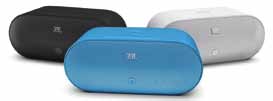According to an explanation by the president of A4WP in a media interview, “The specification is based on non-radiative, near-field magnetic resonance, or loosely-coupled wireless power transfer, defined in a CEA-published glossary of terms as resonant wireless transfer of power through magnetic induction between coil(s) where the coupling factor (k) can be less than 0.1, though values up to 1 may also be supported, and where the system requires (coupled) magnetic resonance. What makes the technology unique is that its application demands that the designers explicitly address impedance matching between the charger and device to be charged. In contrast, in the case of classic magnetic induction, or so-called tightly-coupled solutions, there is no need for impedance matching as the charger and device to be charged are held in extremely close proximity, where even the slightest rotational or translational shift causes power transfer and effciency to drop signifcantly. Ultimately, this difference between tightly-coupled (a first-generation wireless power transfer technology) and loosely-coupled (a second-generation technology) is the improvement in user experience owing to spatial freedom.”
Consumers will like A4WP because it supports simultaneous charging of multiple devices with widely differing power requirements such as handsets, Bluetooth headsets, MP3 players, GPS devices and mobile tablets. It also delivers spatial freedom, which means that users can drop multiple devices randomly onto the charging surface without bothering to precisely position them. It will also fitwell into next-generation home healthcare and outpatient monitoring devices where, for reasons of hygiene and ergonomics, completely-sealed devices are preferred.
[stextbox id=”info” caption=”A look at the wireless charging product range”]• Mobile phones capable of wireless charging, such as the Nokia Lumia 920, Samsung Galaxy S4, Google Nexus 4 and HTC Droid DNA
• Wireless charging sleeves for Galaxy S3, iPhone 4S, from brands like Energizer, Phillips and Duracell
• Charging pads for mobile phones, from makers like Powermat, Samsung, LG, JBL and Nokia
• Devices that double up as charging pads, such as JBL PowerUp, Oregon Scientific Bedside Alarm
• Wireless charging video cameras, e.g., the Qi-enabled Panasonic HC-V720M, Pentax WG-3 GPS
• Low-power consumer goods like electric toothbrushes (e.g., Oral-B rechargeable toothbrushes)
• Smart watches, such as the new Agent by Secret Labs
• Electric charging in vehicles like the Nissan Leaf, Chevrolet Volt and Renault Fluence using technologies like Plugless L2, Qualcomm Halo, etc
• Wireless charging kitchen counters from DuPont
• Kitchen appliances that can be wirelessly charged, such as blender and rice cooker from Haier
• Intel proposes A4WP-based laptops, tablets, etc, in the near future
• Navigation devices, such as those demonstrated by Fulton Innovation at CES 2013[/stextbox]
For the benefit of the consumer electronics industry, the A4WP specification goes with broadly-adopted wireless technologies, such as Bluetooth LE, which will allow manufacturers to minimise hardware requirements. For industrial designers, the A4WP specification leverages a near-field magnetic resonance technology that provides more flexibility for charging applications to be installed into automobiles, furniture and other surfaces.
The A4WP specifcation also features a simpler transmitter antenna design, a simpler wireless power control system, and the ability to transfer power through non-metallic surfaces at greater distances, without the need for costly multi-coil repeaters. Besides, A4WP promises that the specification will only freeze the requirements for the transmitter and receiver, mutual coupling and mutual inductance, leaving most options open to members’ designers. Designers can specify and source their own out-of-band radios, power amplifiers, DC-to-DC converters, rectifiers and microprocessors—discrete or integrated—and assemble them as they require. As long as the components conform to the specification, they can be of any topology.

It is believed that A4WP’s specifiction is based on WiPower, Qualcomm’s wireless charging specification, which was approved by the A4WP in January. A4WP is supported by other industry leaders including Intel, IDT, TI, Broadcom, Samsung, LG, Haier, Denso, and so on.
Charge anywhere in a room with WiTricity
The PMA recently formed a technical working group to add a resonant implementation to the Power 2.0 group of specifications. WiTricity, an MIT spin-off and the exclusive patentee for MIT’s wireless energy transfer technology, was appointed vice-chair of this working group, with the immediate task of creating a specification for smartphone-ready highly-resonant wireless power. This specification, expected to be available by the end of this year, will be fully compatible with the PMA’s existing inductive wireless power specification and products.
WiTricity’s wireless charging technology tops the benefit of spatial freedom, by offering distanced wireless charging using tuned electromagnetic resonators that effciently transfer power over large distances via the magnetic near field. So, you just need to walk into a WiTricity powered location, and your devices will start charging. Although it might seem that WiTricity’s technology is similar to traditional magnetic induction, it is not. In traditional systems, the efficiency of the power exchange drops by orders of magnitude when the distance between the coils becomes larger than their sizes. As we have seen earlier in this feature, the power exchange efficiency of some induction systems is improved using resonant circuits. However, the technical literature on WiTricity’s website claims that, “…to the best of our knowledge, WiTricity’s founding technical team was the first to discover that by specially designing the magnetic resonators, one could achieve strong coupling and highly-efficient energy exchange over distances much larger than the size of the resonator coils, distances very large compared to traditional schemes.”





